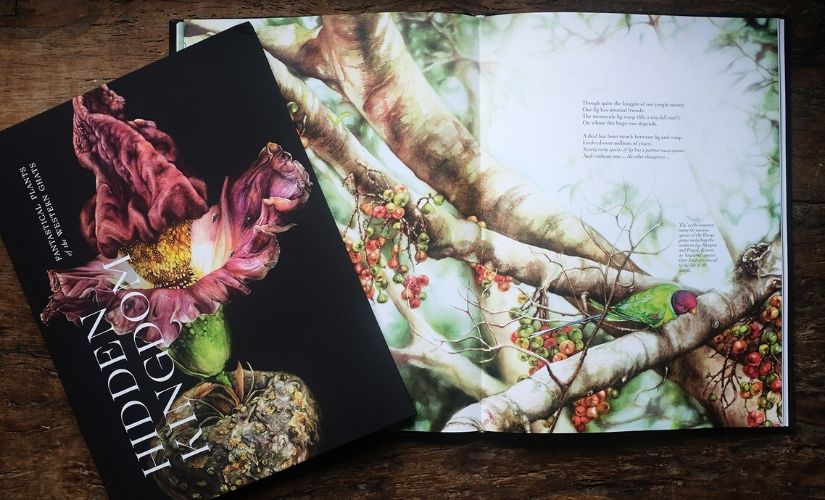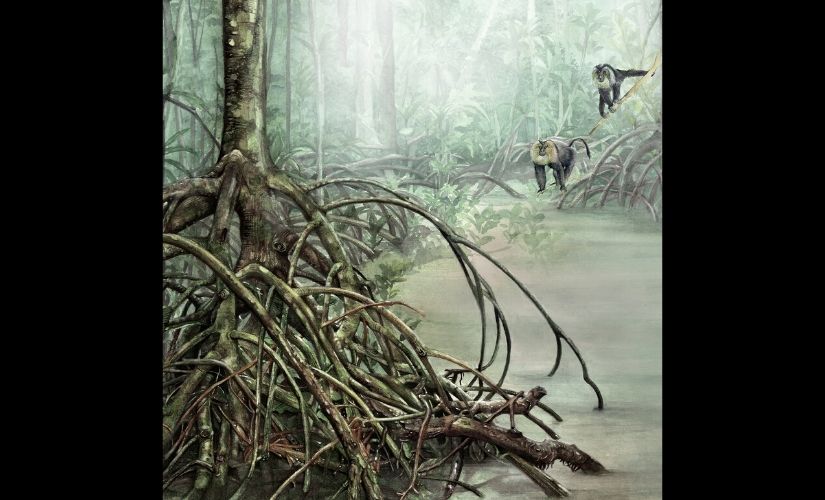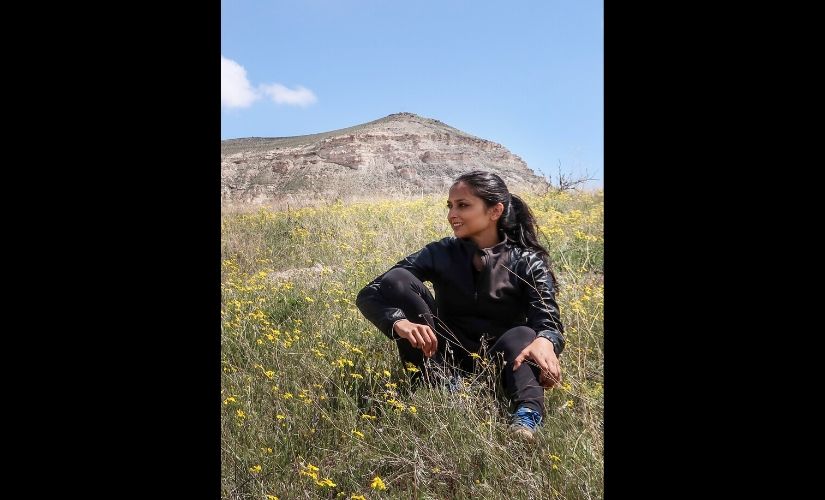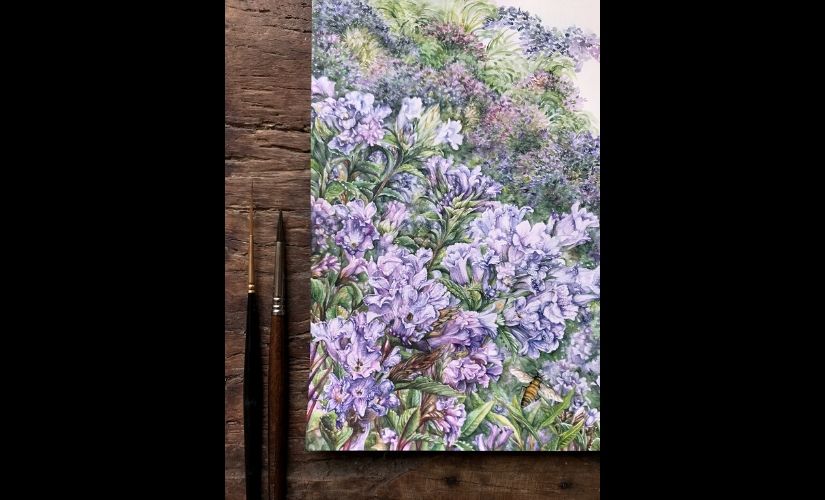“We often struggle to identify a fig tree…” reads a line in the introduction of the book, Hidden Kingdom: Fantastical Plants of the Western Ghats. As one nods in agreement with this seemingly simple yet complex truth, Nirupa Rao, who has hand-painted the illustrations in this gorgeous treatise on rarely seen botanical wonders, explains, “I think we struggle to identify with plants, because they’re not like us. Animals have faces, movements and social relationships that we relate to, which perhaps draw us to them.” In today’s world, as we distance ourselves from our natural surroundings, and disassociate from how much plants truly affect our daily lives (from the food we eat to the air we breathe), this book gives us a peek into the plant kingdom. “The less we know about them, the less we notice them, and the less we care about them.” Nirupa states, “My hope is that botanical illustration can help change that: not only by highlighting how these plants function in our ecosystems, but also by humanising them in a way, — allowing people to see them through my eyes and those of the scientists I collaborate with.” [caption id="" align=“alignnone” width=“825”]  An illustration from Hidden Kingdom: Fantastical Plants of the Western Ghats[/caption] The book documents the charisma of the Western Ghats in all its diversity. The Western Ghats is special because it is one of the world’s major hotspots for biodiversity. From species like the endangered elephant and tiger, to the lion-tailed Macau and the Nilgiri langur, as well as medicinal plants found alongside wild relatives of grains, fruit and spices, it is a treasure trove of key genetic resources. About 12,000 species are estimated to occur here, with about 2,100 of its 5,800 flowering plants being ‘endemic’ to the area, which means they can’t be found anywhere else in the world. The Hidden Kingdom is easy to read, yet catches your attention because of its spellbinding detailed illustrations. A National Geographic Young Explorer, Nirupa Rao is a botanical illustrator based in Bengaluru. Her work is inspired by regular field visits in the wild, and informed by close collaboration with natural scientists. She has also published Pillars of Life — Magnificent Trees of the Western Ghats (2018), a debut project in collaboration with naturalists Divya Mudappa and TR Shankar Raman of the Nature Conservation Foundation. She also illustrated the cover of Amitav Ghosh’s latest novel, Gun Island, and re-jacketed four of his older novels for Penguin-Random House. [caption id=“attachment_7729771” align=“alignnone” width=“825”]  An illustration of Mystirica swamps[/caption] The book took shape when Nirupa was in college and interned at the children’s department of Bloomsbury Publishers in London. Surrounded by incredible books on birds, flowers and animals, in collaboration with British institutions like the Royal Society for the Protection of Birds and the London Zoological Society, she confesses that she couldn’t help but wish that, growing up, she had had books like that, that taught her about the incredible flora and fauna of India. About three years ago, she applied for a National Geographic Young Explorer’s Grant to help realise this dream. Nirupa collaborated with specialists in different areas in researching for the book. The text in the book is by Suniti Rao, and the research is by Siddarth Machado, a botanist who knows the Western Ghats well. Prasenjeet Yadav documented the journeys with his pictures. “We travelled to the area several times, visiting swamps, tropical forests and grasslands,” Nirupa recalls. “Some days we would trek for hours through waist-high streams and pouring rain. I even had a leech in my eye at one point. But sitting down to appreciate the beauty and solitude of the forest, in the company of good friends, is a sublime experience.” [caption id=“attachment_7729781” align=“alignnone” width=“825”]  Illustrator Nirupa Rao[/caption] The rich illustrations are at the very heart of the book: colourful, comprehensive, and cohesive in form, they are vivacious and reel the reader in. Nirupa shares that the leaves took the longest to paint, as the venation and texture were tricky to nail. She laughs, “Flowers are actually relatively simple, and can be finished in a few hours, while I might take two days over a single leaf!” Nirupa confesses that the illustration of the Myristica Swamps was probably the hardest. “We had visited the location, and Prasenjeet had taken great photographs of different species of wild nutmeg that grow there, with their distinctive stilt and knob roots. The challenge was to bring all of these different elements together in one composition. You’ll also notice lion-tailed macaques in this painting, — fascinating primates that are endemic to the Western Ghats, and often prefer these swamps as their habitat. While incorporating them, I was still keen to have the plants in the foreground, as they usually don’t get the spotlight.” While the book has included some animals, birds and insects in its fold, the focus is firmly on the plants. Nirupa agrees and adds, “Most people can name their top ten favourite animals, while struggling to recognise a handful of plants. By focusing on plants, we hope to show that they too are very much active, with their own unimaginably creative mechanisms to cooperate and compete, to spread seed and thrive. How carnivorous plants growing in nutrition-poor soils supplement their diets with insects, or how flowers that are pollinated by dung beetles emit the smell of rotting flesh to attract pollinators. After all, they are the fundamental building blocks of life, the reason why the earth is habitable to this day.” [caption id=“attachment_7729791” align=“alignnone” width=“825”]  An illustration of Neelakurinji[/caption] From the beautiful basket ferns, to the mysterious Neelarkunji, and the exotic elephant foot yam — the plants with unusual behavioural habits along with the capacity to inspire awe, alongside visual appeal — were selected to be showcased in the book. The idea was to represent a range of plant types, such as flowering and non-flowering plants, tropical evergreen, dry deciduous and grassland species, and ones displaying various environmental adaptations, such as epiphytes, saprophytes and parasites, among others. The artist is enthused by the response received at the recent Bangalore Lit Fest, and will be presenting Hidden Kingdom at the National Geographic annual symposium in Washington DC in January. Looking forward to continuing to educate people through her art, she sums up the journey of the book in a nutshell, “It’s intended for children and adults — anyone young at heart. It’s intended as a family heirloom of sorts.”
Hidden Kingdom: Fantastical Plants of the Western Ghats is a treatise on rarely seen botanical wonders, illustrated by Nirupa Rao. In today’s world, as we distance ourselves from our natural surroundings, and disassociate from how much plants truly affect our daily lives (from the food we eat to the air we breathe), this book gives us a peek into the plant kingdom.
Advertisement
End of Article


)
)
)
)
)
)
)
)
)



